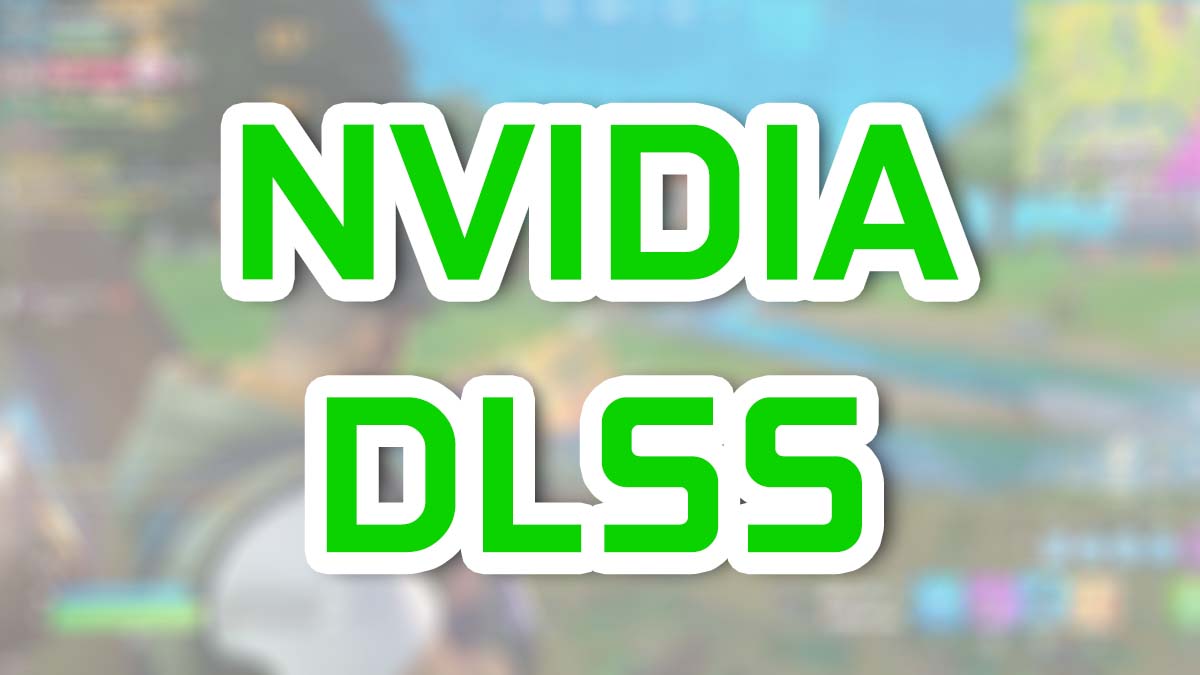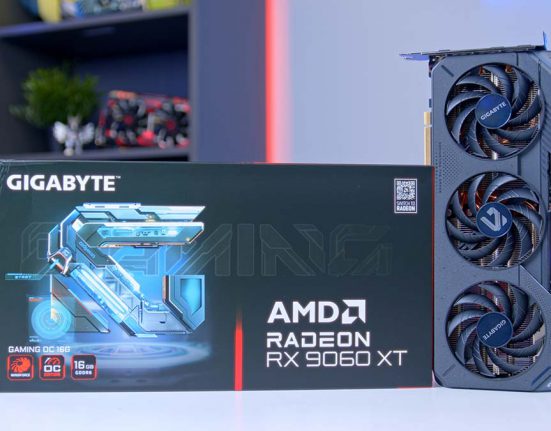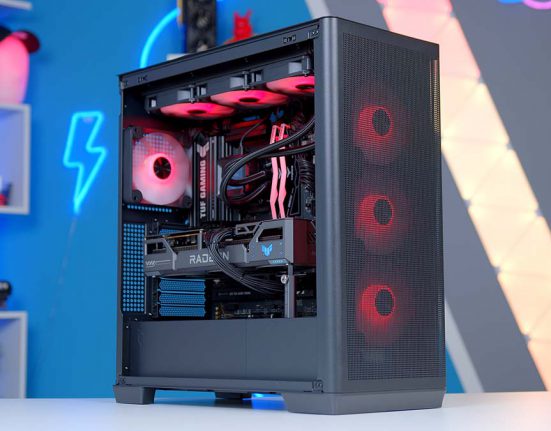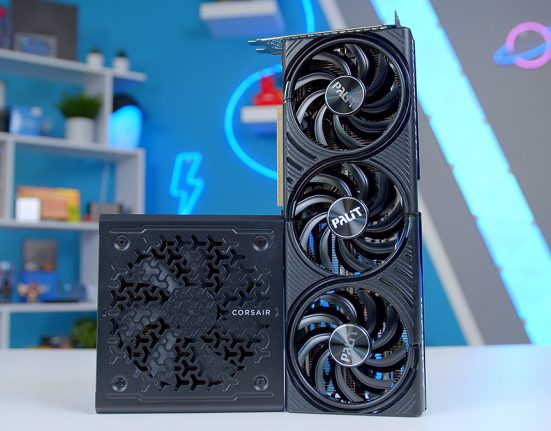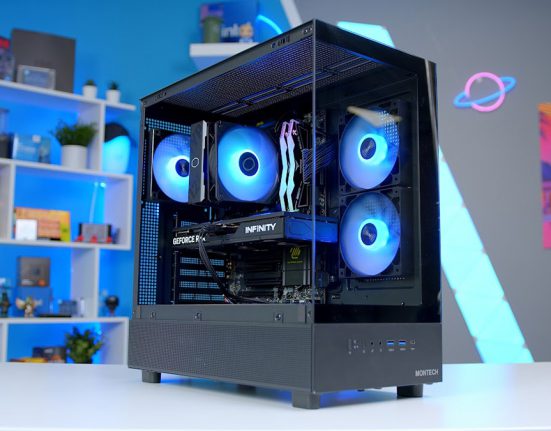Introduction
In the past few years we’ve seen the graphical fidelity of games progress in a huge way. With more complex textures, reflections and scenes than ever before, the demand on hardware is bigger than it has been in a long time. This increase in hardware demand from titles has lead to numerous innovations which look to boost performance. Once of these major innovations is Nvidia DLSS.
DLSS was first launched back in early 2019, with the dawn of Nvidia RTX 2000 series – the first RTX lineup of GPUs. The aim: leverage the increased AI power of the RTX GPUs to supercharge frame rate through software optimisations, doubling down on the hardware-based performance increase. At the time, support was limited to the latest Battlefield title, but the list of compatible titles has thankfully grown rapidly in the 3 years since. Today, DLSS is supported by most of the latest titles, including Fortnite, COD Vanguard, Forza Horizon 5 and Battlefield 2042.
Suggested Article: What is a GPU and Do You Need One For Gaming?
What Does DLSS Stand For?
DLSS stands for Deep Learning Super Sampling. The tech uses deep learning AI in order to render games at a lower native resolution and upscale to your displays resolution. This essentially gives you the frame rate levels you would find at a lower resolution, but the visual fidelity of the higher, display resolution.

Is DLSS Proprietary to Nvidia?
Yes. AMD have launched their FidelityFX Super Resolution tech in a bid to rival DLSS – but the results still have some way to go. The main reason why Nvidia’s DLSS provides such a performance boost is because of Nvidia’s secret sauce – ‘deep learning’. Nvidia has trained AI models with machine learning to recognise and process the data of high-resolution scans. By doing this, the anti-aliasing in your game can use the AI model to fill in the data. This provides great super-sampling, but without the overhead to go with it. DLSS also does this offline, minimising the performance loss and increasing frame output.
Alternative Solutions
Currently DLSS provides incredible metrics and opens up higher resolution opportunities to lower-end cards. There are alternatives to DLSS, such as the aforementioned AMD FidelityFX Super Resolution is great competition versus Nvidia’s solution. Games tend to roughly perform at the same level, and this option is also open to Nvidia’s 10 series cards. Intel is also developing an alternative form of supersampling known as XeSS which is an upcoming feature for Intel Arc Alchemist GPUs. In light of new graphics cards being released quickly, manufacturers providing software solutions to increase performance is great to see.
What Cards and Games Can use it?
DLSS is incredible for higher resolutions, but unfortunately there is a caveat. For those of you still using GTX 10 series cards, DLSS is not available. DLSS uses the Tensor cores in the RTX 2000 and 3000 series cards, making these cards a firm requirement to use the tech. DLSS will perform better on the 30 series cards because the new Tensor cores offer better per-core performance, but RTX 2000 series still perform very well. After all, who is saying no to free frame rate?! It is a shame to see DLSS not available on older generation cards, especially as the Steam Hardware Survey shows GTX 1060 cards as the most popular in the market, but the lack of Tensor Cores on 10-series makes this unviable.
In terms of game titles, DLSS is widely supported. Since Nvidia’s release of DLSS the list has only been growing, with most of the popular titles supporting the tech, but there are some gaps. Nvidia has provided a table of their supported games that you can check out, which will give you an idea of what’s around. If your favourite game isn’t on there, don’t lose hope as Nvidia may support in the future!
Performance Metrics
Below we’ve included three games that support DLSS and the kind of frames that you should expect with each game using a mid-range card- the 3060Ti. The resolution is set to 1440p resolution and high graphical settings to really show the power of DLSS.
Battlefield 2042
Starting off, with DLSS on we’re off to a great start! In Battlefield, the 3060Ti achieved an average of 90-100FPS. Battlefield is a rather large game, and in terms of graphical fidelity, it really pushes performance. In areas with large objects and particle effects DLSS really strives in outputting high frames. Without DLSS we’re averaging around 80-90FPS. Although the performance increase isn’t necessarily huge, under areas that cause high stress the fps difference will be noticeable.
Call of Duty Vanguard
In Vanguard the performance increase is rather substantial. Frames with DLSS tend to average around the 170-180 mark, sometimes even 190 upwards. Without DLSS we were only getting around 100 frames on average. We also saw a decrease in colour depth and sharpness. DLSS increases graphical fidelity with the AI rendering, so its disappointing to see less colour without DLSS.
Fortnite
Generally Fortnite is quite a well optimised game hitting well over 120FPS without the need for DLSS, but Nvidia’s solution soars in this instance. From even within the menus with DLSS enabled Fortnite skyrocketed to 270 frames. When we jumped from the Battlebus, the frames leaped to highs of 370. DLSS has really proved its optimisation of performance in Fortnite and will be a great experience for all players!
Additional Titles
DLSS is supported in many titles, so below we’ve got a graph of some of the performance you should expect out of a 3060 Ti and other graphics cards. To briefly describe, on average we’re able to hit relatively good performance in a lot of the triple A titles. The 3060 Ti hits well over 100fps at 1080p High settings, and will jump up to even higher numbers with DLSS enabled. Overall it is incredible to see the level of performance coming out of a mid-range card, especially with software that boosts that performance even higher!
[adrotate banner=”7″]
Conclusion
Nvidia’s DLSS is a spectacular integration that massively improves fidelity and performance. On top of that, it opens up an experience for users that don’t necessarily have the hardware for higher settings or higher resolutions. It has also been fantastic to see Nvidia include the Tensor cores needed for DLSS on their latest budget release, the RTX 3050. Giving DLSS support to budget gamers is a major step forward and a positive sign of things to come!
Video
Paid Partnership
The below video was produced in paid partnership with Ebuyer and Nvidia. The rest of this article has been produced separately, and without the oversight of any brand partners.


